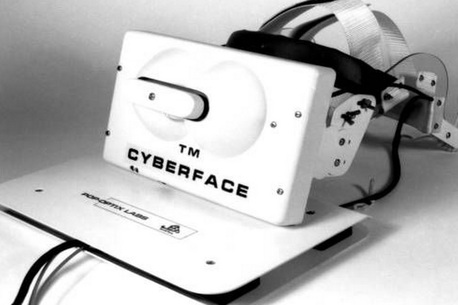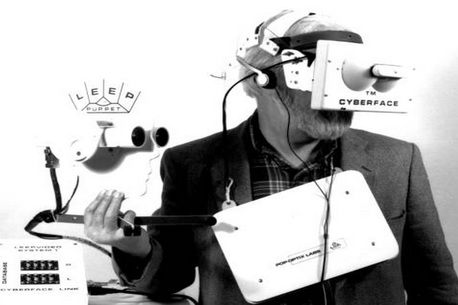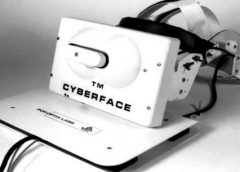
About: Since 1985 NASA and VPL had been using the wide-angle LEEP viewing lenses in various head mounted display projects. Then, in 1988, NASA and a sensory research group at M.I.T. tasked Pop-Optix Labs with designing very wide-angle LEEP format lenses for video cameras. This work is what first made wide angle telepresence possible. With the release of the original LEEP Cyberface In March of 1989, Eric Howlett became the first to offer a commercial head-mounted display. The technology is essentially identical to that in the NASA “VIEWS” (Virtual Interface Environment Work Station). Like the NASA HMD, the Cyberface is monochromatic, but provides very wide angle stereo. This is a reasonable trade-off considering the technology that was available at the time the Cyberface was first created.
Cyberface Specs and Info…
Device: Cyberface (Cyberface1)
Manufacturer: LEEP
Announced Date: Unknown
Release Date: March 1989
Launch Price: Unknown
Device Type: VR Headset (PC Powered)
Display: 1.3” LCD displays and LEEP at 240 x 120 (Per Eye)
Diagonal Field of View(FOV): 100°
Refresh Rate: Unknown
Weight: Unknown
CPU: N/A
GPU: N/A
Battery: N/A
Tracking: 3 DoF Non-positional (Gyroscope Based)
Controllers: N/A

Our Thoughts: The Cyberface from LEEP was released in 1988 and features a host of groundbreaking design and technology. With wide angle lenses and comfortable build, it was one of the first VR headsets that you could, in theory, wear for several hours. But the motion sickness wouls get you talking it off within seconds.
The main problem with having a 100° field of view was the LCD screen resolution at the time was only 240 pixels which meant the screen was stretched beyond what might have looked anywhere near good enough. But much like other VR headsets of its time its a piece of history and should be respected as such.
Sources used…
- http://www.leepvr.com/cyberface1.php/
